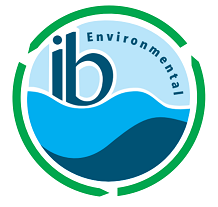Gwinnett County Department of Water Resources – Water Resources Assistance Program (WRAP)
By Alanna Kinnebrew
This is one in a series of blog posts that describe customer assistance programs (CAPs) for customers who are experiencing financial hardships at specific Georgia utilities. CAPs take different forms, but they provide help to customers who can’t afford their water/wastewater bills.
About Gwinnett County Department of Water Resources
Serving close to a million residents, Gwinnett County is historically known as one of America’s most diverse and fastest-growing counties. The county constructed its major water and wastewater main lines in the 1970s. It has since managed to meet its growing demand by continuing to invest in key water and wastewater infrastructure.
The Gwinnett County Department of Water Resources produces more than 70 million gallons of water daily to be used by the residents and businesses of Gwinnett County. The county’s source of water is Lake Lanier, a manmade reservoir created by Buford Dam on the Chattahoochee River, which is withdrawn and pumped to two water treatment plants. Together the two plants can produce more than 200 million gallons of clean water daily. The county’s wastewater collection system serves more than 180,000 wastewater customers and includes over 3,000 miles of wastewater pipeline, which treat on average 56 million gallons of wastewater a day. With maintaining service to so many customers, one may wonder: what is the average cost of service for a Gwinnett County customer?
On average a residential household that consumes 4,500 gallons of water per month would likely pay about $75.14 based on the 2022 water/sewer rates, however, with rates increasing in 2023, the cost for consuming 4,500 gallons of water per month will increase to about $80.48. To help customers having difficulty paying their water bills, the utility has also been making use of the temporary Low-Income Home Water Assistance Program from the federal government. Otherwise, Gwinnett does not have a bill discount program like some of the other examples in this blog series. Instead, it has historically referred customers facing difficulty in paying their bills to local charitable organizations. A more recent, indirect way of assisting low-income customers with their bills has been to offer services including water efficiency, using another source of federal pandemic-related funding, as described below.
Water Resources Assistance Program
In early 2020, the U.S. Congress appropriated funds in response to the COVID-19 pandemic. Gwinnett County received funding through the American Rescue Plan Act, which is creating an opportunity for the county to foster its commitment to supporting the community with utility assistance. As a result of this funding, the county allocated $1 million in 2022 towards the creation of the Water Resources Assistance Program (WRAP). This is a temporary program due to its funding source, however, there is an additional $3 million available to continue the program if demand persists.
Gwinnett Water Resources partnered with Gwinnett/Walton Habitat for Humanity because of their existing work with A Brush with Kindness program (ABWK), which provides home repairs to seniors and low-income families. The missing piece with ABWK was the exclusion of plumbing repairs due to funding restrictions. With WRAP in place, qualified Gwinnett residents can receive financial assistance with home plumbing repairs associated with damage caused by leaks and retrofitting of toilets, faucets, and showerheads for greater efficiency. In addition, residents can get assistance towards the cost of the repair or replacement of failing septic systems.
Plumbing Services Offered:
Plumbing Repairs: services could include repairs such as leaking/broken toilets, leaking fixtures, water heater leaks, and service line leaks.
Retrofitting Homes: services could include the retrofit of the entire home with low flow, high-efficiency toilets, faucets, and showerheads if the home was built prior to 1992. Retrofitting a home with these items will cut down on water use and save money on the water bill.
Septic Systems: service could include septic system repairs and replacement.
Eligibility:
To qualify for assistance, families who are unable to afford these repairs must reside within the Gwinnett County service area, own and live in their homes, and make no more than 60 percent of the area’s median Income (AMI). See figure 1 below for a snapshot of the program’s maximum income level per family size. The Gwinnett/Walton Habitat for Humanity has made the application process easily accessible on their website (https://habitatgwinnett.org/wrap-program/) where applicants can apply online or download and print the application to be mailed in.
Figure 1: WRAP Maximum Income Limits Per Family Size
Toilet Rebate Program
Gwinnett, similar to many other water utilities within the Metro North Georgia Water Planning District, participates in this District’s toilet rebate program. Gwinnett water customers are eligible for a $75 rebate per toilet by replacing old toilets with qualifying 1.1 gallons per flush (gpf) or less WaterSense certified toilets. The county participates in the single-family residential program, which is run through the District and is further described in this blog on Henry County Water Authority’s assistance program. The multi-family residential program, which includes apartment, condominium, and townhome complexes, is managed by Gwinnett County and provides a lump sum amount that is credited to the water bill.
This toilet rebate program through the District is scheduled to sunset on December 31, 2025.
Through programs such as the toilet rebate and WRAP, Gwinnett is able to lower water use, and therefore the water bill for low-income customers.
This is part of a blog post series funded by the Georgia Environmental Finance Authority (GEFA).
Disclaimer: The opinions of the writers should not be considered legal advice or endorsement by GEFA.
Subscribe Here
Sign up with your email address to receive notices of new blog updates. We post about once per month.


